It’s approaching 5 PM, and the sun is already sinking into the dusky horizon, wavering languidly in the 95-degree heat. The call to prayer crackles through a loudspeaker above street level, reverberating through the empty walkways of Jeddah’s old town. Between the carefully restored wooden shutters and squeaky-clean cobblestone streets, there’s no one in sight — apart from the 30 or so other western travelers in my tour group. I’ve been traveling in Saudi Arabia for two days, and I’ve only met one person so far who lives here: our tour guide, Bandar Abdulrahman Al-Harbi.
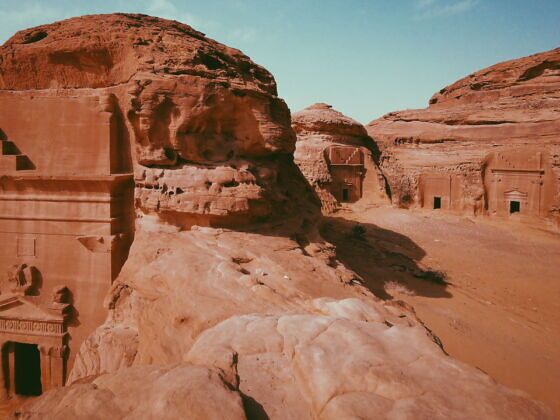

I Went on the First Cruise to Saudi Arabia in 17 Years. This Is What It Was Like.
I’m on a preview cruise of Emerald Cruises’ new Red Sea itineraries, due to launch in January 2022. The ship we’re on, Scenic Eclipse, is an expedition vessel built to slice through ice sheets in the Antarctic circle. But it’s been brought to one of the hottest places on earth to transport some 150 of us in total — plus a crew of around the same number — from Jeddah, Saudi Arabia’s second-largest city, some 430 miles up the coast to a modest port city called Yanbu, on to a heritage site called AlUla, and back.
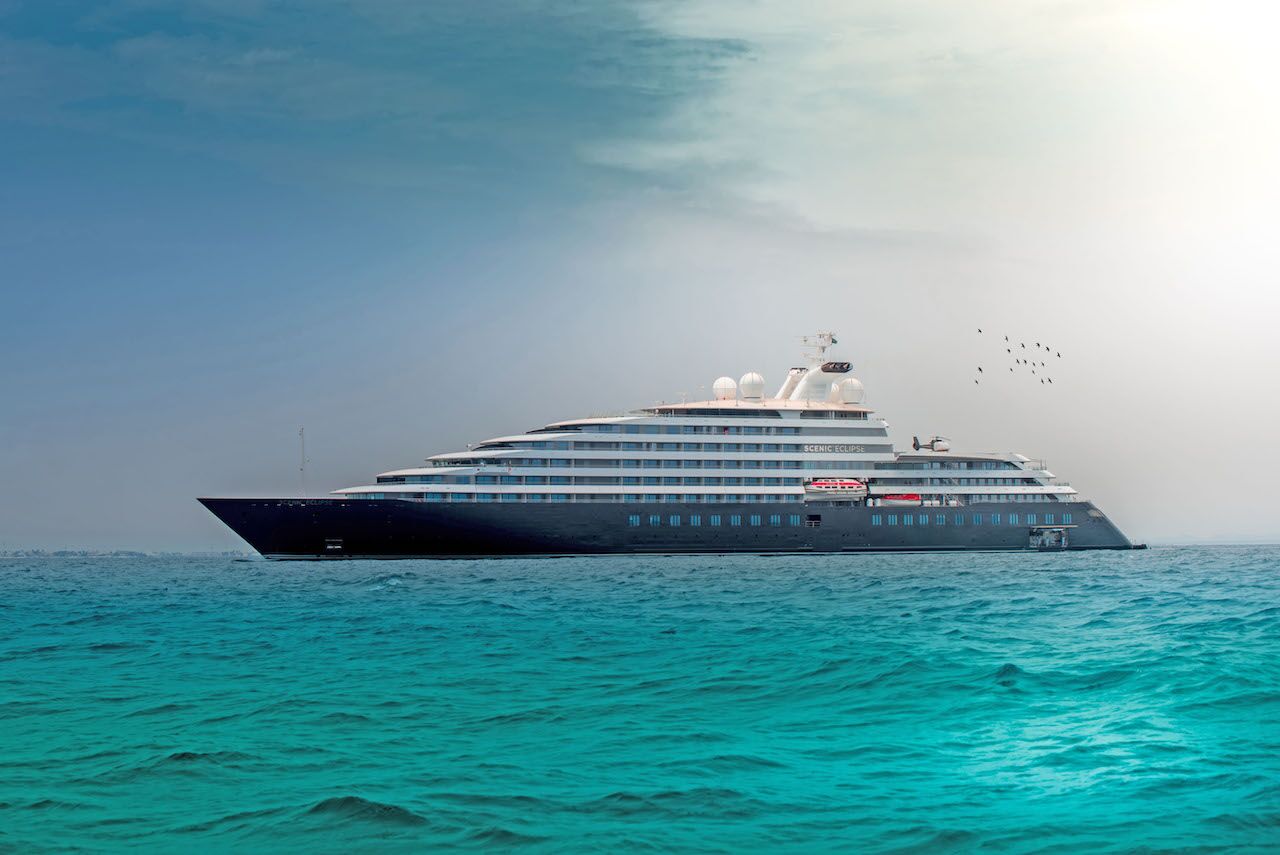
Photo: Courtesy of Four Communications
Traveling to Saudi Arabia has been all but impossible for the past 17 years, which is when Scenic CEO Glen Moroney tells me the last cruise took place here. My group is one of the first few international visitors to experience a change in the kingdom, thanks to a project called Saudi Vision 2030 led by the kingdom’s de facto ruler, 36-year-old Crown Prince Mohammed bin Salman.
A range of social and economic changes, which not long ago would have been unthinkable, have swept into Saudi society since Vision 2030 was announced in 2017. Women have won the right to drive, own businesses and travel unchaperoned, and foreign investment has increased to diversify the economy away from oil. Though still reliant on its oil reservoirs, Saudi Arabia has announced ambitions to become a global sustainability leader, too. And tourism is at the crossroads of it all.
“We are going to be the largest tourism destination in the world, powered 100 percent by renewable energy,” claimed John Pagrano, CEO of the Red Sea Development Authority — a company funded by the Saudi monarchy to develop a luxury, coastal tourism destination — at London’s World Travel Market in November. The kingdom plans to welcome 100 million visitors by the end of 2030 — but not everybody is interested in going. Despite the ongoing PR makeover, this is still an authoritarian regime judged by its human rights record: homosexuality and sex outside of marriage are punishable by death or flogging. Sharia law underpins a society where strict dress codes impact on gender expression, and despite substantial recent progress for women, feminist activists are routinely jailed and tortured here.
For us on the Scenic cruise, there are a few things to bear in mind whenever we alight onto dry land. We must dress modestly, particularly the women. Full coverage from the neck to the ankles — in loose fabric — is best, but your shoulders and knees at least should be covered (that goes for men, too). Female tourists don’t have to wear a hijab (headscarf), but I soon find that it’s a good idea beneath the unrelenting sun. Couples on the cruise must be careful not to show any affection in public, and it goes without saying that any LGBTQ+ couples must keep their relationship secret (something that, understandably, is a deal breaker for many would-be visitors to Saudi Arabia). There’s no swearing, absolutely no drugs, and zero alcohol — except for when the ship sails 12 miles out into the Red Sea and enters international waters. The announcement is met with enthusiastic applause every night.
Traveling in Saudi Arabia: The cruise from Jeddah to AlUla
Our first three days are spent cruising the waters outside of Jeddah, docking just once for a two-hour walking tour of the old town, Al Balad. The lopsided townhouses date back to the Ottoman period and are beautiful, their wood-latticed balconies and shutters having been repainted and renovated to a film-set standard. They look like a Disneyfied version of Old Delhi.
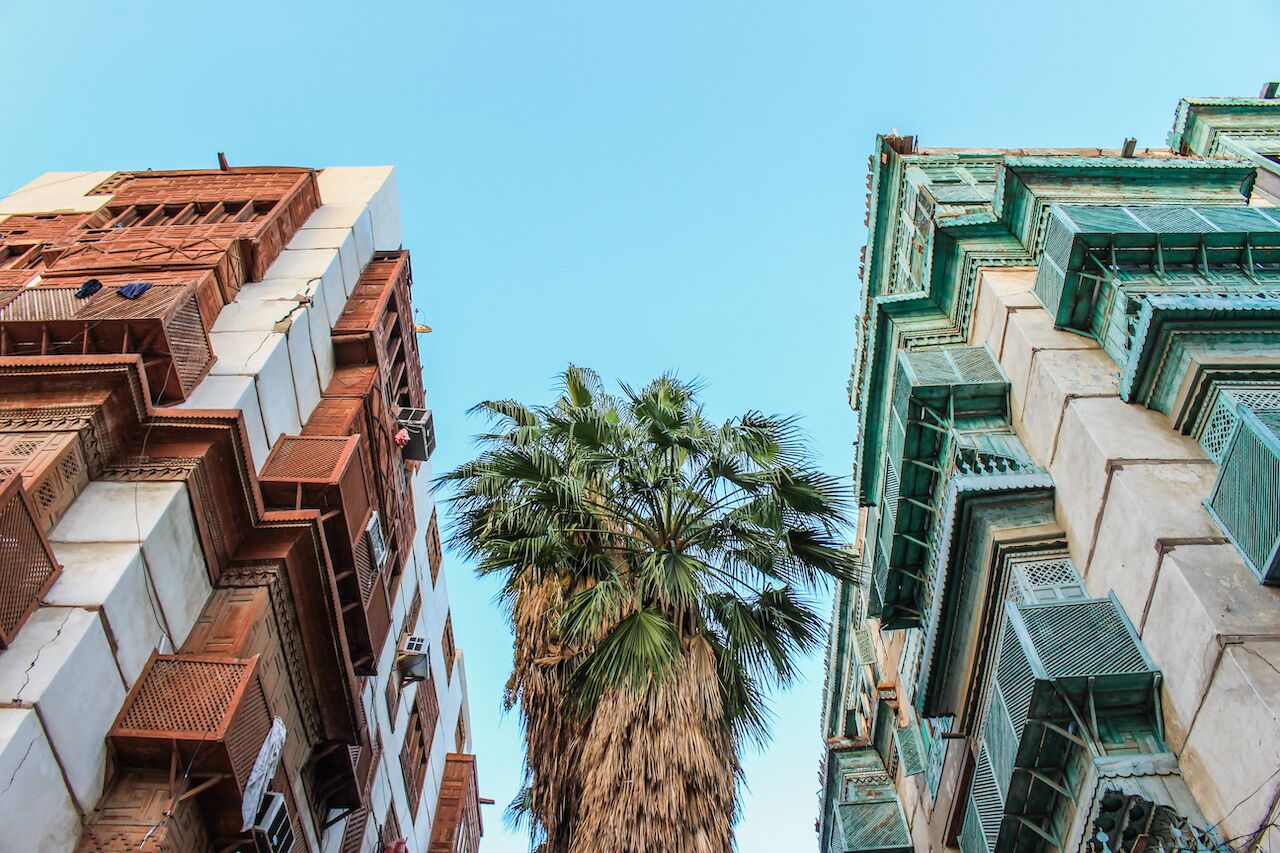
Nesru Markmedia/Shutterstock
“These houses are being restored by the Ministry of Culture,” explains Bandar, when I ask why it’s so quiet. It turns out the area has laid empty for decades — abandoned for tower blocks with air conditioning, running water, and electricity. Currently, the only people living here are squatters — low-income laborers that sleep here after their long shifts in construction. “Once renovated, they’ll be high-value properties again. It’s a smart move by the Saudi government,” he says.
We’re whisked through a low-key souk, where spices, incense, and jewellery are neatly on display in strip-lit stands, to step inside a replica of an old townhouse and the vacant inner courtyard of an 800-year-old, pristine-white mosque. Then the call to prayer is delivered, and we’re bundled back onto the ship — with the usual intense level of security — before we have the chance to see if any local worshippers will arrive for Friday prayers.
On day three, Saudi Arabia feels a long way away. We dock near a tiny, uninhabited island a few miles from the shore — a white strip of sand unknown to everybody but the captain of our ship and a community of nesting turtles. Sticking to one small patch of beach to avoid damaging the nests, we stand-up paddleboard and swim in the sea, washing away last night’s whiskies (the Scenic Eclipse bar has 100 varieties). We head back to the ship on a speedboat shuttle when the sun gets too strong.
On board, we’re in an opulent no man’s land. 10 restaurants serve up seemingly everything but Middle Eastern cuisine — over the week we dine on sushi imported from Japan, steak flown in from Australia, fine French molecular cuisine, and a south Indian tasting menu. The onboard sommeliers pair it all with wine, swapping the display bottles for coffee pots when we dock on Saudi shores.
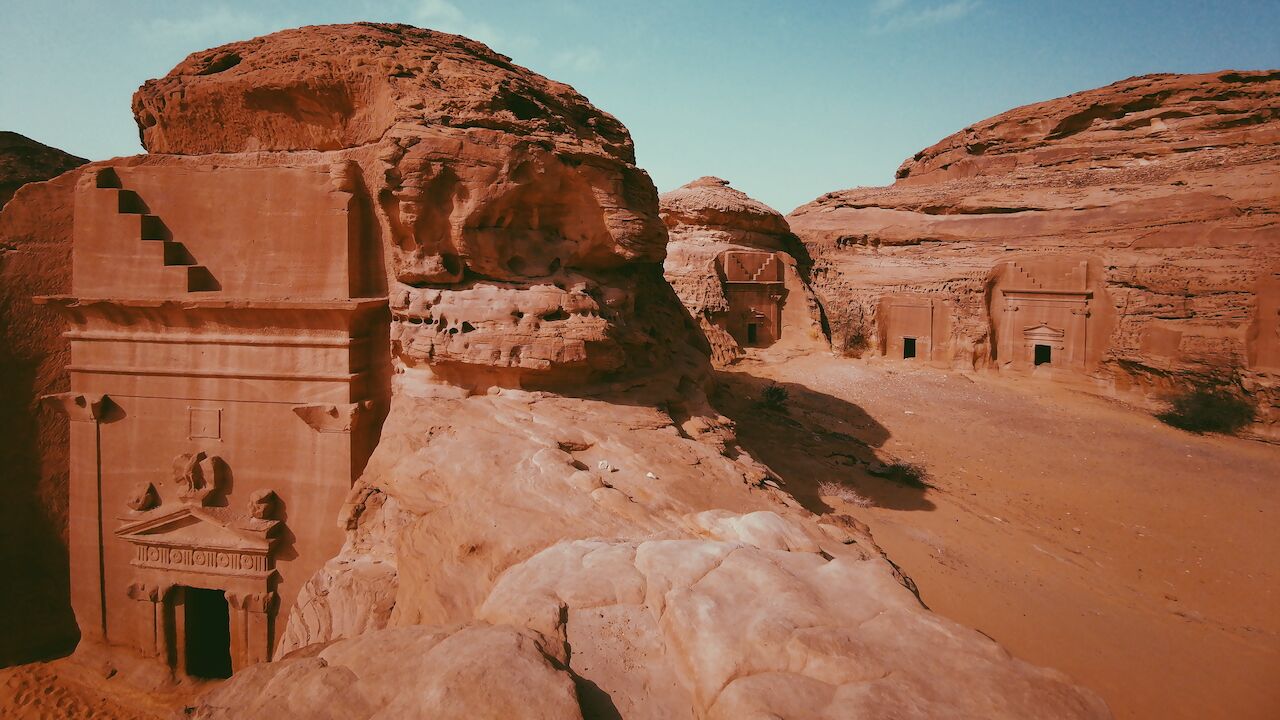
Photo: Courtesy of Four Communications
The next day, we cruise to Yanbu, an unassuming city whose port has received huge investment for one special reason: it’s the gateway to the crown of the Saudi kingdom’s tourism plans, AlUla. The country’s first UNESCO World Heritage Site, this archeological wonder encompasses a series of tomb complexes — the most impressive of which is named Hegra — cut into the desert’s sandstone rocks over 2,000 years ago by the Nabateans, the same civilization that built Petra. It’s an hour’s flight into the arid, ochre-hued desert, where we arrive at a brand-new airport built for the predicted influx of tourists — AlUla International Airport received its first international flight, from Dubai, in November. Today, we’re the only visitors here. It’s a remarkable privilege that won’t be replicated if the Saudi authorities meet their tourism targets.
Here, we eat our first Middle Eastern meal: a buffet of lamb stew, flatbreads, and hummus (with lasagne and fries on offer, too) at Shaden Resort, a hotel hidden in the rocks nearby. The whole area is in the early stages of major development thanks to a $20 billion cash injection from public and private investment sources, which will see many more luxury resorts and attractions being built here in the coming years. We visit one of the first after lunch: Maraya, a mirror-covered concert hall designed by Italian architect Gio Forma that opened in 2019. There are (potentially unfounded) rumours that Adele will perform there in 2022. In the meantime, AlUla’s first festival, Winter at Tantora, will take place from 21 December-12 February 2022, with the tombs at Hegra hosting candlelit concerts between Christmas Eve and New Year’s Eve.
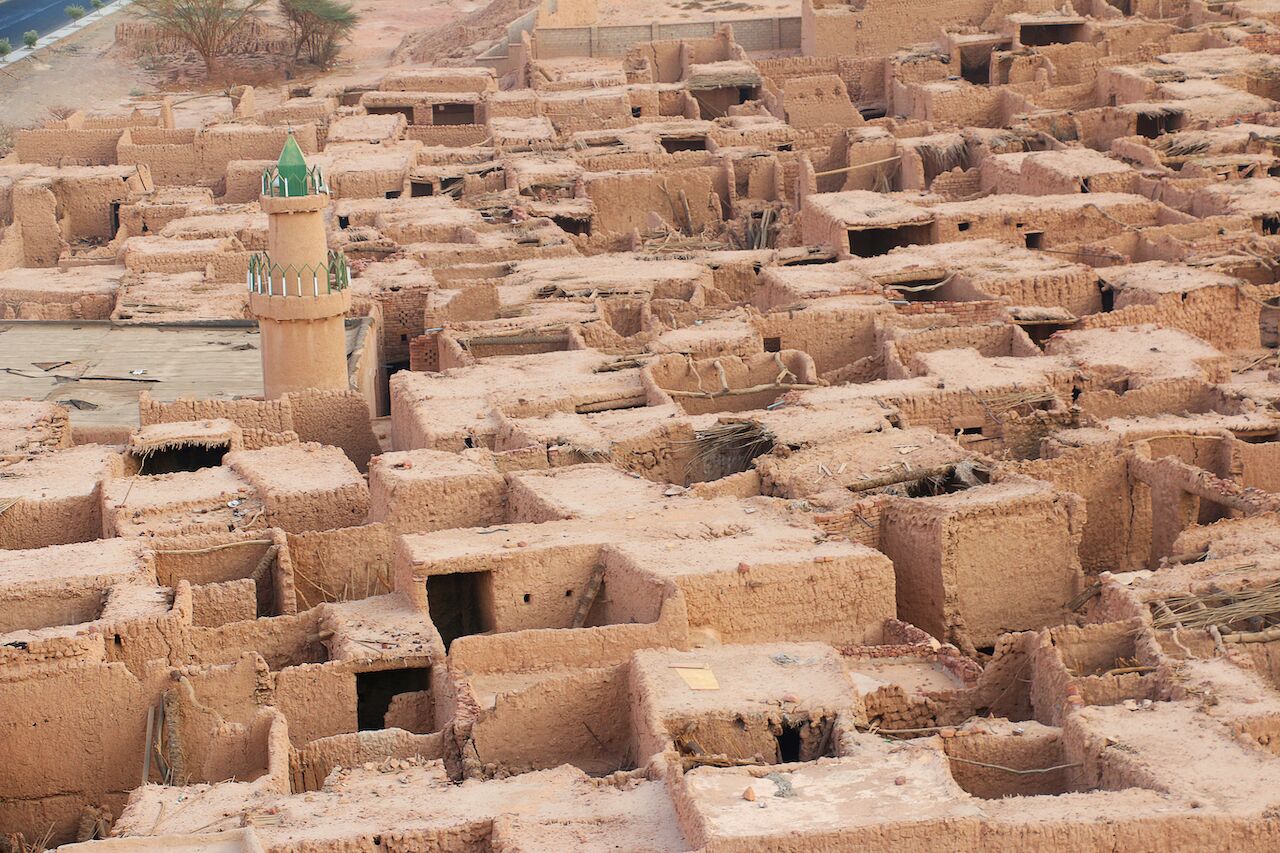
Crystal Eye Studio/Shutterstock
Before flying back to Yanbu, we explore the mud-brick houses of AlUla Old Town — another area void of people, having been abandoned in the 1980s in favour of modern housing. Again, the ancient medina has been restored to impeccable standards, with new-looking woven rugs and wooden stools laid out to illustrate how people here once lived. The second Saudi Arabian person I speak to is here — a female tour guide called Anwar*. As part of Vision 2030, 50 percent of jobs in tourism have been given to women, and Anwar trained in Arizona for the position.
“Having visitors here is a positive thing, for sure,” she says. “When people come from outside Saudi Arabia, some of them think because I wear a niqab, there are lines they cannot cross. They think that I cannot speak to men, but actually half of my colleagues are men. I think it’s our job to let people know that it’s ok to approach us.”
It’s eye-opening to meet a cosmopolitan, young, professional woman here — a type of person that’s not often given a platform in the media. But we’re out of time and soon back on the plane to Yanbu, where we spend an evening in yet another place that’s been manufactured for the fledgling tourism industry.
Beside Yanbu’s port is the city’s old town, which is also experiencing grand-scale renovation. Old townhouses have been restored to look brand-new. And void of residents, the area has instead been turned into a living museum of actors replicating pre-industrialised Saudi life. Elementary-age schoolboys sit cross-legged around a blackboard, pretending to be in class. A man walks around with a pail of water on his shoulders, and a band plays traditional music with an official Vision 2030 sign as the backdrop. Inside the replica souk, mass-produced pashminas, incense, and knickknacks are sold on credit card machines instead of cash. It feels about as far from an authentic experience as it gets.
That said, there’s also a stretch of decent restaurants and shisha bars here, occupied by groups of young local Yanbu residents — including unchaperoned women. With two friends, I escape the old town to compare it to the city outside. It’s a completely different world, of dusty, unformed roads, stray cats, and no restaurants. We come across a group of men, sipping cardamom tea on a threadbare sofa outside their homes. They welcome us warmly, insisting that we join them for a tea and homemade biscuit, and to swap stories of where we come from. The only group of Saudis I’m to meet that aren’t part of the Vision 2030 project, these friendly guys have been sipping tea on this sofa each night for the past 40 years.
The future of tourism in Saudi Arabia
Back on the ship for the final stretch to Jeddah, we discuss the future of tourism — and cruising — in Saudi Arabia. The first seven-night sailing out of Jeddah for the MSC Bellissima, a ship that can carry 1,000 passengers, kicked off on November 6, 2021.
“Mainstream cruising has never happened here before,” says Mark Robinson, chief commercial and operations officer for Cruise Saudi, a body created in January 2021 to kickstart cruising here.
“In 2018, 98 ships sailed past Saudi Arabia, for six days all the way down the coast, but they weren’t allowed to stop. We’ve created a new source market for the cruise industry, by making use of these ports.”
It’s been fascinating to witness what it looks like to manufacture a tourism industry from scratch — but frustrating to have been kept at arm’s length from real Saudi society. It seems that there’s a lack of infrastructure to experience the country, outside of the tourist-designed experiences at AlUla, Yanbu, and Jeddah.
Perhaps that’s only to be expected in a place where 70 percent of the population is under 30, so have lived most of their lives without much contact with the outside world — until now. But the fact that the country is so youthful is one reason why its development will be so interesting to watch. Maybe when Vision 2030 has a few more years under its belt, it’ll be more possible to get under the skin of Saudi Arabia as an independent traveler, with the knowledge that your tourism dollars are going to independent businesses and local people. In the meantime, luxury tourism in this closed-off society is picking up pace – despite the kingdom’s contentious politics.
*Not her real name. She asked to remain anonymous